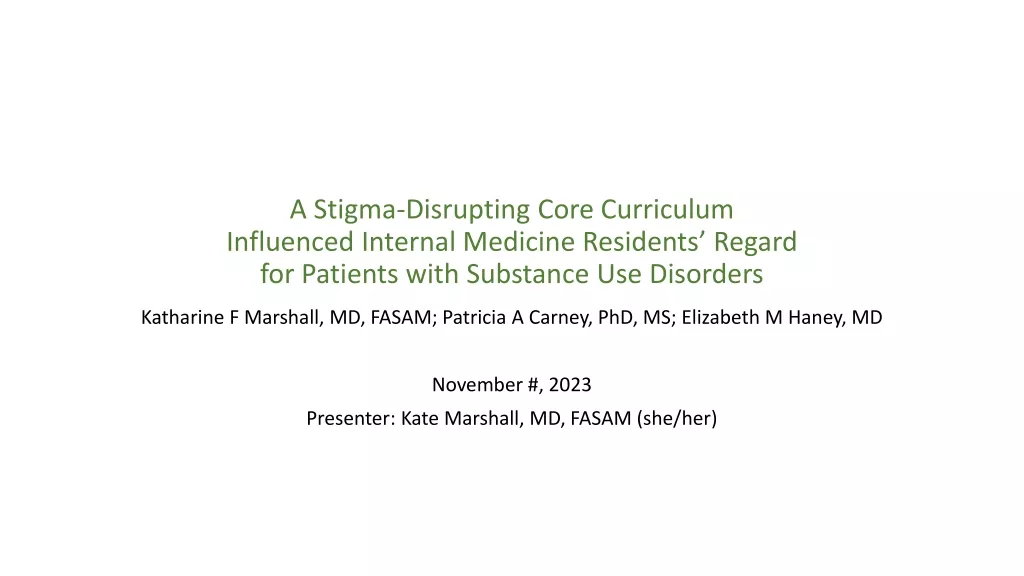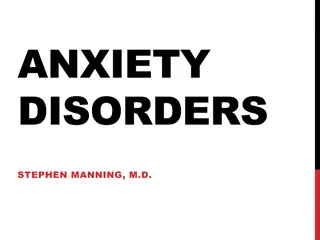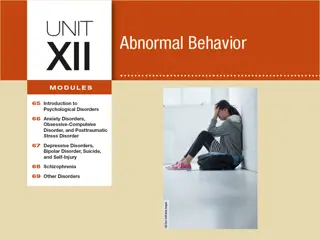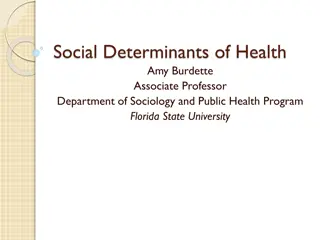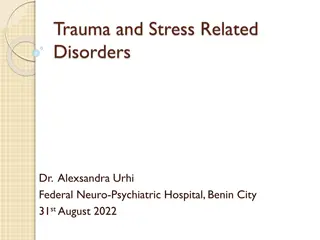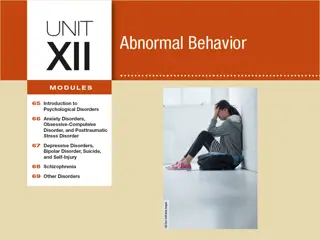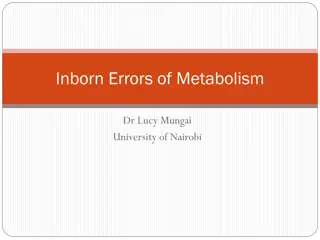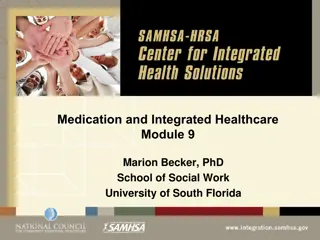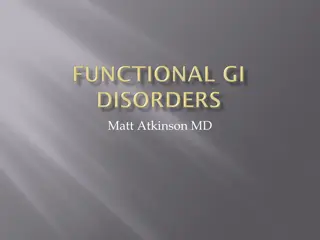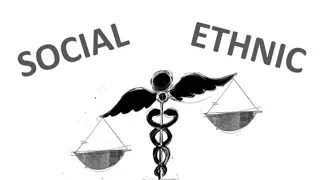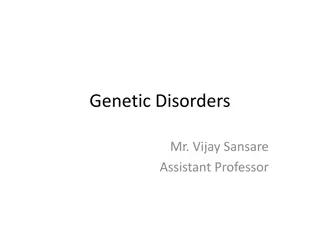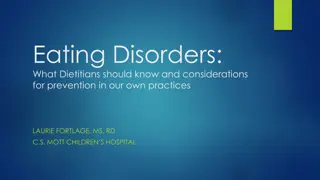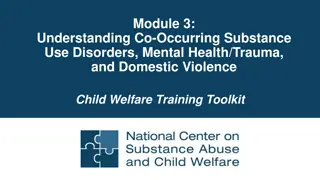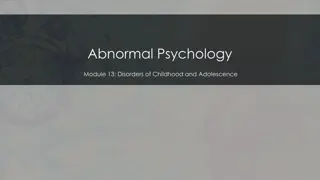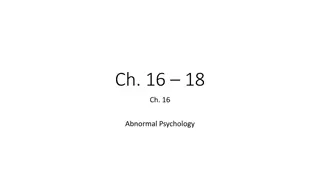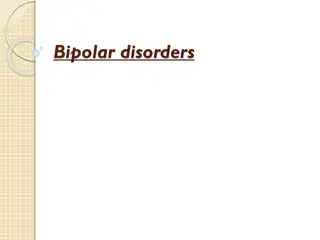Impact of Socioeconomic Conditions on Drug Use Disorders: Insights from World Drug Report 2020
The World Drug Report 2020 highlights the strong correlation between socioeconomic factors and drug use disorders. Studies reveal that communities facing poverty, violence, and social inequality are at a higher risk of drug overdoses and addiction. Factors like income inequality, lack of social capital, and community norms play significant roles in influencing drug-related behaviors. Understanding these dynamics is crucial for addressing and preventing drug use disorders globally.
Download Presentation

Please find below an Image/Link to download the presentation.
The content on the website is provided AS IS for your information and personal use only. It may not be sold, licensed, or shared on other websites without obtaining consent from the author.If you encounter any issues during the download, it is possible that the publisher has removed the file from their server.
You are allowed to download the files provided on this website for personal or commercial use, subject to the condition that they are used lawfully. All files are the property of their respective owners.
The content on the website is provided AS IS for your information and personal use only. It may not be sold, licensed, or shared on other websites without obtaining consent from the author.
E N D
Presentation Transcript
Click to edit Master text styles Second level Third level Fourth level Fifth level World Drug Report 2020: Socioeconomic World Drug Report 2020: Socioeconomic characteristics and drug use disorders characteristics and drug use disorders Vienna, 25 June 2020
Social-economic conditions and drug use at the macro level
Social-economic conditions and drug use at the macro level
Social-economic conditions and drug use at the macro level
Social-economic conditions and drug use at the macro level
Relationships between community characteristics and drug use disorders: Poverty and violence A study conducted in 10 cities in Spain between 1996 and 2003 found that people living in neighbourhoods characterized by socioeconomic deprivation were up to seven times more likely to die from a drug overdose than people living in more affluent areas A study conducted among 505 African-American young people living in high-poverty rural areas in the United States showed that the experience of poverty and harsh parenting had led to a lack of investment in the their future, which in turn had increased the risk of drug use disorders
Income inequality, community disorganization and low social capital One mechanisms hypothesized to explain association between socioeconomic inequality at the city or country level and drug use disorders is social capital, defined as the extent to which people in a community trust and support one another and the institutions that govern them
Community norms regarding drug use and drug and alcohol availability disadvantaged neighbourhoods that are characterized by low social capital and disorganization, individuals may consider engagement in risky behaviour as normal, Important context with regard to young people are schools and universities and, with regard to adults, workplaces
Individual socioeconomic circumstances and drug use disorders Among adults living in high- income countries, drug use disorders tend to be more prevalent among those who experience socioeconomic disadvantage, measured in terms of low educational level, low income level or unstable employment status, or a combination of these socioeconomic trajectory from childhood to adulthood is also associated with the risk of drug use disorder
Mechanism underlying interaction between socio- economic disadvantage and drug use disorders Genetic factors Family and peer dynamics Adverse life events, stress, lack of support networks and resources, and their psychological consequences
Socioeconomic consequences of drug use disorders Community-level consequences negative outcomes among children and young people growing up in families and communities characterized by drug use disorders drug use may influence the socioeconomic characteristics of neighbourhoods illicit drug market provides economic opportunities that can lead individuals to disengage from the legal labour market and discourages official businesses, perpetuating a cycle of poverty and social disorganization that can fuel further drug use disorders
Groups particularly impacted by socioeconomic disadvantage - Women Compared with men, women who have a drug use disorder are more likely to have a co-morbid psychiatric disorder Women face particular risks in terms of sexual and reproductive health, as well as the experience of sexual violence, particularly in contexts of poverty and drug use Women who have a partner who also has a drug use disorder can suffer as a result of the partner s addiction, as well as its consequences Women who are mothers are additionally vulnerable because their children s welfare can also be affected by their drug use
Groups particularly impacted by socioeconomic disadvantage - Sexually diverse populations Studies of sexual minorities in a few countries have shown that adolescents and adults who have sexual relations with people of the same sex or who identify as lesbian, gay, bisexual transgender, queer or intersex are more likely to have drug use disorders than people who identify as heterosexual This increased risk of drug use among individuals who belong to LGBTQI groups may be explained in part by the stigma and discrimination, whether real or perceived, that such individuals often face from an early age
Groups particularly impacted by socioeconomic disadvantage - Indigenous and aboriginal peoples There is extensive evidence on the increased risk of drug use disorders among individuals who are members of indigenous and aboriginal peoples. Examples: The elevated risk of death among indigenous peoples in North America seems to be particularly related to psychostimulant use; importantly, this rate has increased in recent years Rates of use of certain drugs such as inhalants are elevated among the native populations of Alaska and the Arctic.
Groups particularly impacted by socioeconomic disadvantage - Ethnic groups and immigrants Examples: In Germany, the level of cannabis use tends to be higher among Turkish-German young people than among young people who do not have an immigrant background. In the United Kingdom, black and mixed-race people are also at higher risk of cannabis use than white people, but this risk is low among people who originate from South-East Asia, particularly women. levels of drug use have been found to vary across ethnic groups in other countries; for example, they appear to be elevated among young people belonging to hill tribes in northern Thailand. Differences in drug use disorders across ethnic and immigrant groups may in part reflect differences in socioeconomic difficulties, as well as the general experience of stigma and discrimination
Groups particularly impacted by socioeconomic disadvantage displaced persons Displaced persons are people who have been forced to leave their homes because of armed conflict, generalized violence, human rights violations or environmental disasters, and who have moved to another area within their own country (internally displaced persons), or to another country (refugees) Factors that are likely to increase the risk of drug use among displaced persons include exposure to trauma160 and lack of economic opportunities. Access to drug treatment for displaced persons is a major challenge, in particular for those who migrate to a different country.
Groups particularly impacted by socioeconomic disadvantage People in rural settings People living in rural areas may face specific challenges in accessing adequate treatment in cases of drug use disorder. Example A study conducted among more than 1,600 people registered as drug users in Hunan Province, China, found that those residing in rural settings were generally less likely to report past participation in drug treatment than those living in urban settings (2.8 per cent versus 6.8 per cent). In Australia, where people who use drugs residing in rural areas are less likely to access information and services for the prevention of adverse health consequences of drug use and treatment of drug use disorders than those living in urban settings


